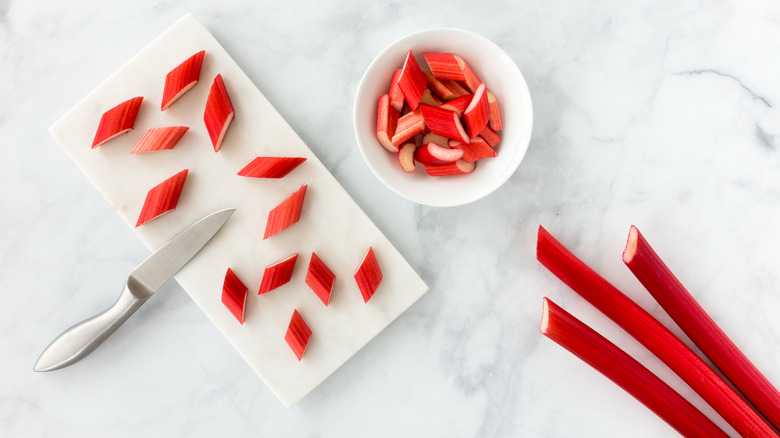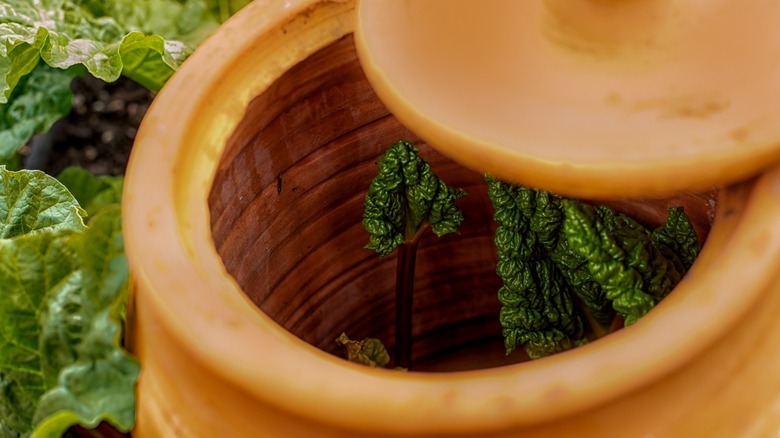Why Some English Rhubarb Is Grown Entirely In The Dark
Rhubarb's roots run deep. The first record of rhubarb (that we know of) dates back to the 3rd century A.D. That text, "The Herbal Classic of Shen Nong," discusses the "Divine Farmer," who is believed to have lived sometime around 2800 B.C. They were the first to identify rhubarb as a "cure" for stomach ailments. In the 9th century, Arab doctors also used rhubarb as medicine. By the 1500s, France was using it as folk medicine. It was four times as expensive as saffron and ten times more than cinnamon. Russian even attempted to monopolize the European rhubarb industry in the 1600s, but it was smuggled into Britain during the 1700s. It wasn't long afterward that rhubarb caught on as produce and became a popular dessert ingredient (via South China Morning Post).
It's not hard to see why. According to Food Network, rhubarb comes into season every spring, opening various culinary options to chefs. The stalk, ranging from pink to green, is naturally quite sour. While some enjoy mouth-puckering rhubarb as is, many others cook its stalks with sugar to create a tart yet vegetal flavor. Cooks would be wise to toss out or avoid rhubarb leaves, though. And those looking to save the stalks for later, making preserves or freezing fresh rhubarb are both good options. Per Fine Dining Lovers, there's even a place in England called the "Rhubarb Triangle," where the crop is kept in dark places during the winter... but not for storage purposes.
Forced rhubarb
Rhubarb is naturally sour, but there is a way to grow it sweetly. In 1817, gardeners in London covered leftover rhubarb crowns with soil, and then weeks later, the plants grew pink stems with frilly leaves. That's how it was first discovered mature rhubarb roots could be replanted indoors with low light where the plant instead uses stored glucose to grow. This process makes the rhubarb a lot sweeter, per BBC Travel. Such a revelation created a new market for rhubarb. According to Fine Dining Lovers, forced rhubarb became a winter crop, which was especially useful in the 19th century before fridges were invented. There were 200 forced-rhubarb producers at one point, but logistical issues born from World War II put a stop to much of that.
Nowadays, only a dozen producers grow forced rhubarb in the nine-square-mile "Rhubarb Triangle," as reported by Fine Dining Lovers. Yet, the moist climate is ideal for forcing rhubarb, and England has plenty of soil-enriching wool waste, thanks to local sheep. Growers replant rhubarb in the dark, where its stalks audibly creak as they grow. Then, the plants are harvested by candlelight. For customers, the only downside is the price: It's often double the usual cost. Still, in the wintertime, one can expect extra color and sweetness in anything from ice cream, jams, and pies, to alcohol, salads, and soups (via BBC Travel). Despite being grown in the dark, forced rhubarb is an illuminating corner of the agricultural landscape.

